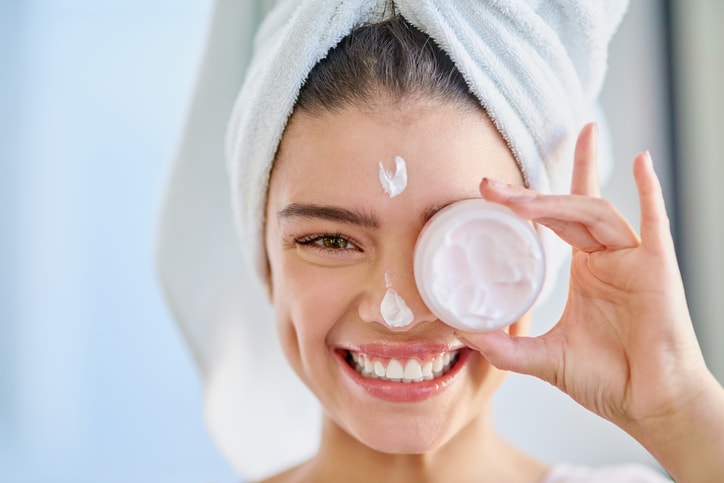Skincare Routine for Combination Skin: A Beautician's Guide
As a beautician, understanding the nuances of a skincare routine for combination skin can significantly enhance your clients' skincare experiences. This particular skin type presents a unique challenge due to its dual natureoily in some areas and dry in others. Crafting an effective skincare regimen requires careful selection of products and techniques tailored to address these contrasting needs.

Understanding Combination Skin
Combination skin is characterized by a mix of oily and dry areas, typically with an oily T-zone (forehead, nose, and chin) and drier cheeks. This imbalance can make it difficult to find products that work harmoniously across the entire face. To succeed, its crucial to use products that target specific areas without exacerbating either condition.
Identifying Client Needs
Before recommending any products, a thorough skin analysis is essential. Observe which areas are oily and which are dry. Ask your clients about their current skincare routine and any concerns they may have, such as acne or sensitivity. This information will guide your recommendations and ensure that their skincare routine is both effective and personalized.
Step-by-Step Skincare Routine for Combination Skin
Creating a balanced skincare routine for combination skin involves several key steps:
Cleansing
Begin with a gentle cleanser that effectively removes impurities without stripping the skin of its natural oils. A mild foaming cleanser can be a great choice as it addresses oily areas without over-drying the skin.
Toning
Use a toner to balance the skin's pH levels. Opt for alcohol-free toners to avoid irritation, especially on the drier areas. Ingredients like witch hazel or rose water can provide soothing effects while helping to control excess oil in the T-zone.
Moisturizing
Moisturizing is crucial for maintaining hydration across the entire face. Recommend a lightweight, non-comedogenic moisturizer that wont clog pores. Products containing hyaluronic acid can deliver hydration without feeling greasy.
Exfoliating
Exfoliation helps remove dead skin cells and prevent clogged pores. However, it should be done sparinglyno more than twice a weekto avoid over-exfoliation. Encourage the use of gentle exfoliants that cater to the dual nature of combination skin. For more on the signs of over-exfoliation, check out this article.
Sun Protection
Daily sun protection is non-negotiable. Suggest a broad-spectrum SPF of at least 30 to protect the skin from harmful UV rays. A mattifying sunscreen can help control shine in oily areas while providing necessary protection.
Additional Tips for Beauticians
Here are a few additional tips to enhance your clients' skincare routines:
Personalization
Every client's skin is unique. Encourage them to pay attention to how their skin reacts to different products and adjust their routine accordingly. Personalized advice can significantly boost their satisfaction and trust in your expertise.
Regular Skin Assessments
Regular check-ins with your clients allow you to assess any changes in their skin condition and tweak their routine as needed. Seasonal changes, hormonal fluctuations, and lifestyle changes can all impact combination skin.
Educating Clients
Empower your clients by educating them about their skin type and the importance of a consistent skincare routine. Provide them with detailed information on each product's role and how to apply them effectively. For more tips on skincare basics, visit this guide.
Common Mistakes to Avoid
While crafting a skincare routine for combination skin, it's important to steer clear of common pitfalls:
Over-Exfoliating
Exfoliating too frequently can strip the skin of its natural oils, leading to increased oil production and potential breakouts. Recommend gentle exfoliants and remind clients to stick to a bi-weekly schedule.
Ignoring the T-Zone
The T-zone requires special attention due to its tendency to become oily. Suggest targeted treatments like oil-absorbing masks to keep this area under control.

FAQ Section
What are the best ingredients for combination skin?
Look for ingredients like hyaluronic acid, niacinamide, and salicylic acid. These offer hydration, oil control, and acne-fighting properties.
How often should clients with combination skin exfoliate?
Twice a week is ideal. Over-exfoliating can lead to irritation and exacerbated oil production.
Can makeup affect combination skin?
Yes, using non-comedogenic makeup products is crucial. Encourage clients to thoroughly cleanse their skin to prevent clogged pores.
For more in-depth information on skincare, visit Ulta Beauty's skincare section.
This article contains affiliate links. We may earn a commission at no extra cost to you.

